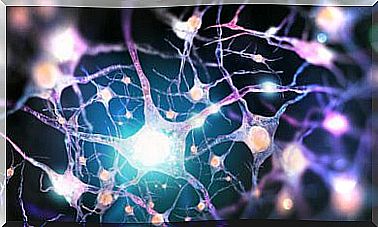Burnout: The Syndrome Of Being Burned At Work

Burnout is defined as the feeling of discomfort produced by work-related overexertion. In the person, this discomfort is usually the direct consequence of a very intense and / or very prolonged stress, so that this pressure ends up exceeding their resources (psychological defenses) to face it. In addition, its incidence is higher in those jobs that are part of the support or help networks (doctors, nurses, psychologists, etc.).
The affected person can manifest the syndrome in different ways. In this sense, one of the most visible symptoms would be demotivation, which causes the quality and quantity of care to decrease. Therefore, we could say that it is considered a state of physical, emotional and mental exhaustion produced by the continuous over-involvement in very emotionally demanding situations.
Maslach, one of the most prominent authors in this field, defines it as a syndrome characterized by “emotional exhaustion that leads to a loss of motivation that often gives way to feelings of inadequacy and failure.”
The three axes on which burnout is articulated
The three axes on which the burnout syndrome is articulated would be:
- Tiredness and emotional exhaustion : People with this syndrome have the feeling of not being able to offer more help or quality support to the patient or family member in front of us, which often makes them feel helpless. The professional cannot give more of himself to others, and he feels tired and fatigued on the psychological level, and often also on the physical level.
- Depersonalization in the treatment : because of the previous process, the professional adopts a treatment of indifference. He is more distant with the patient or family member, so that he does not carry out his work as he should or as he would under normal conditions.
- Feelings of failure due to lack of personal and / or professional fulfillment : in the long term, this means that the job does not produce as much satisfaction as before and the professional begins to encounter feelings of failure or non-fulfillment. It is characterized by frustration -the impotence we talked about in the first point-, low self-esteem and disillusionment with professional achievements.
It is a chain or a process that is fed back, so that it does not have to follow the same order in all professionals, nor is its evolution always gradual. On the other hand, what usually happens is an “escalation of symptoms”, so that the first symptom, unless there is an intervention, usually gives way to the others.
This does not mean that all professionals involved in support networks, related to death or illness, have to wear themselves out. There are professionals who, faced with such tough jobs as palliative care or oncology, come out stronger. Whether the coin falls from one side or the other will depend a lot on the coping resources and the regulation that the person makes of their own emotions.
Coping with burnout
There are certain elements (experiences, people, situations, etc.) that we cannot change or over which we do not have absolute control. Events that are as they are. Events that we would like to have otherwise, that it seems unfair that they should happen, that they should not be.
But … they are just like that. In this sense, in order to take care of ourselves, it is convenient to distinguish between what can and cannot be done; between what is, and what should be. This will protect us from helplessness, frustration, guilt, and anger.
It is important to accept that:
- We are responsible for what we do, not guilty. You can always choose how to react to what has happened.
- We all have limits and we need to take care of relationships: both the one we maintain with ourselves and the ones we maintain with others.
- Pain and suffering affect us: it is normal, we are people. This will help us discover more about ourselves.
- Emotions have their own rules and are hardly subject to the dictates of reason. That is the case, even if you are a healthcare professional.

Effective resources against burnout
For the treatment of burnout, two psychological resources with very powerful therapeutic effects are usually used. We talk about acceptance and compassion. Both try to release tension and allow us to stay motivated and willing to direct our energy proactively. In this sense, proactivity consists of making decisions for oneself, taking charge of what one does without justifying oneself in something external.
In this way, acceptance and compassion allow us to set real and achievable goals, and guide us to finally achieve them. It’s about focusing on what you want, not what you fear. To do this, it is important to seek adequate information and invest in quality training. For example, training in techniques such as mindfulness, which is based on mindfulness focused on the present moment.
Self-regulatory procedures are also gaining in importance in this field. With self-regulation procedures we refer to those strategies that allow us to control our own behavior (emotional, cognitive and motor), to achieve an adaptation to the situation and the circumstances that frame it.
Ultimately, the underlying general approach is simple : regain control over important personal choices (such as dedicating yourself to helping others) that allow you to perform your chosen task in the most effective way and with the least emotional cost possible.









